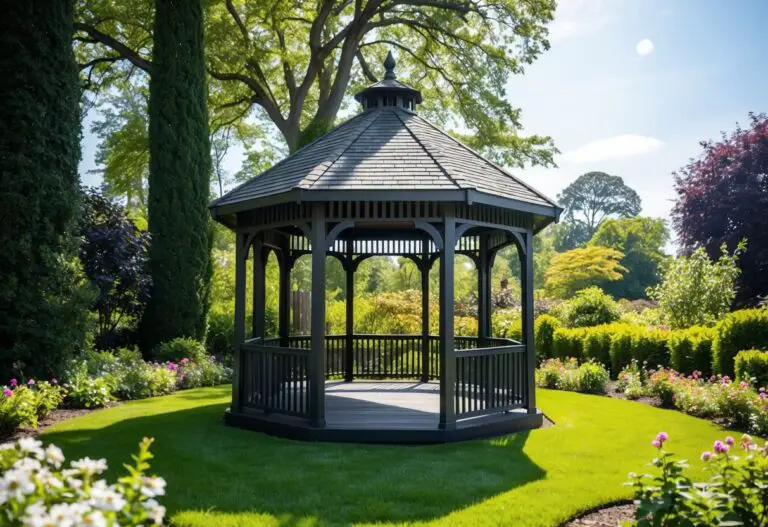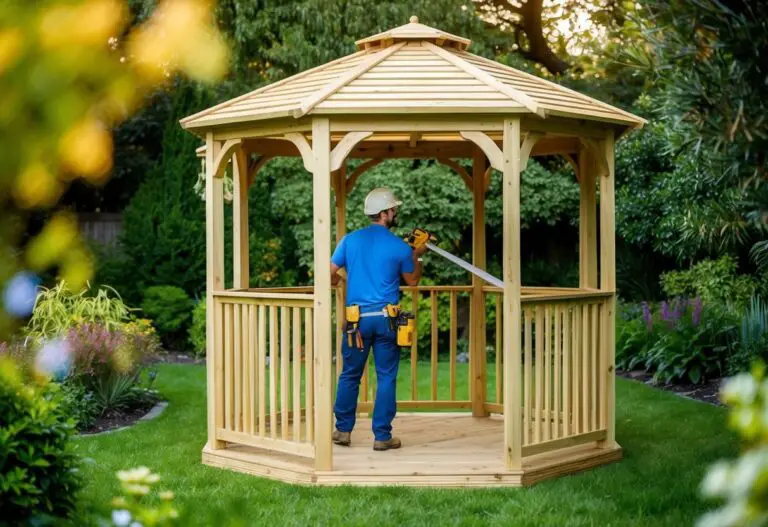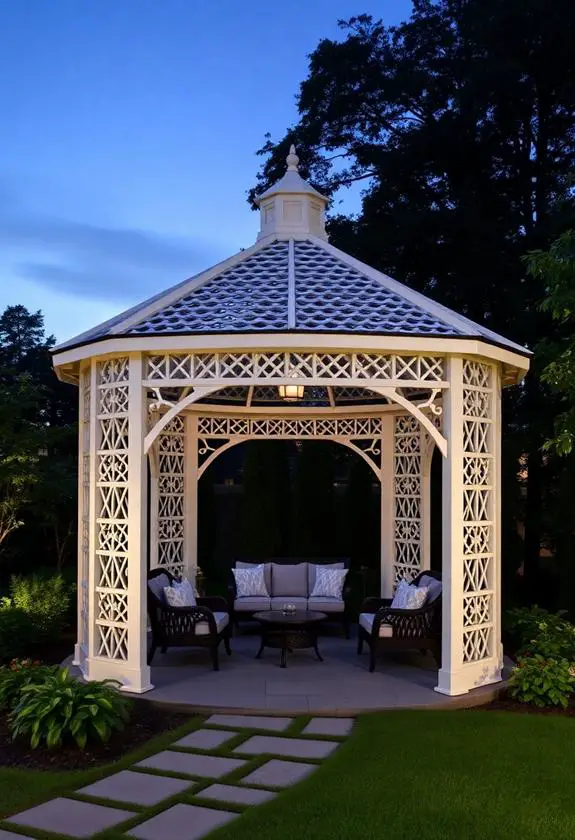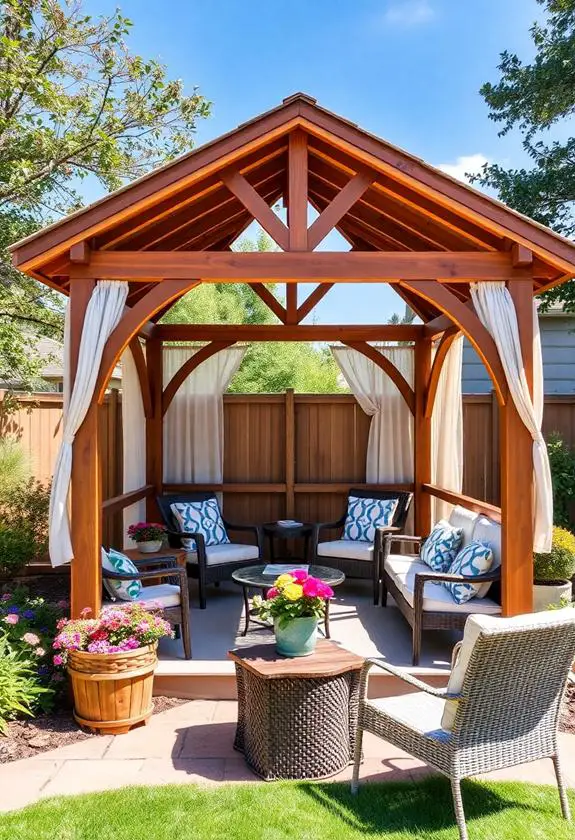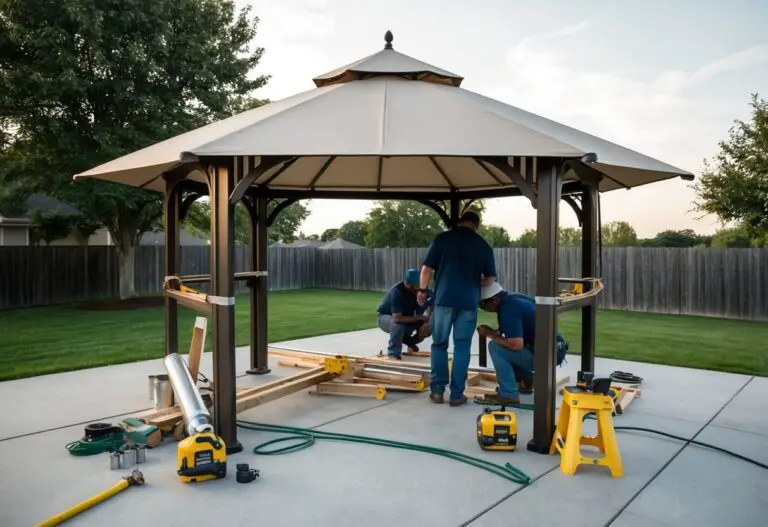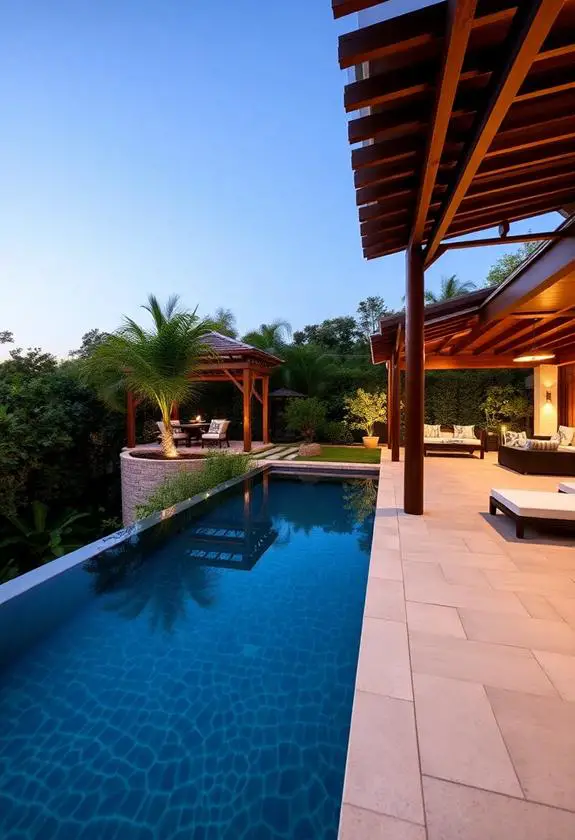Thinking about adding a gazebo to your backyard? You might be wondering if you can set it up right on your lawn. Good news! You can put a gazebo on grass, but it’s important to do it the right way. A gazebo can turn your yard into a cozy spot for relaxing or hanging out with friends.
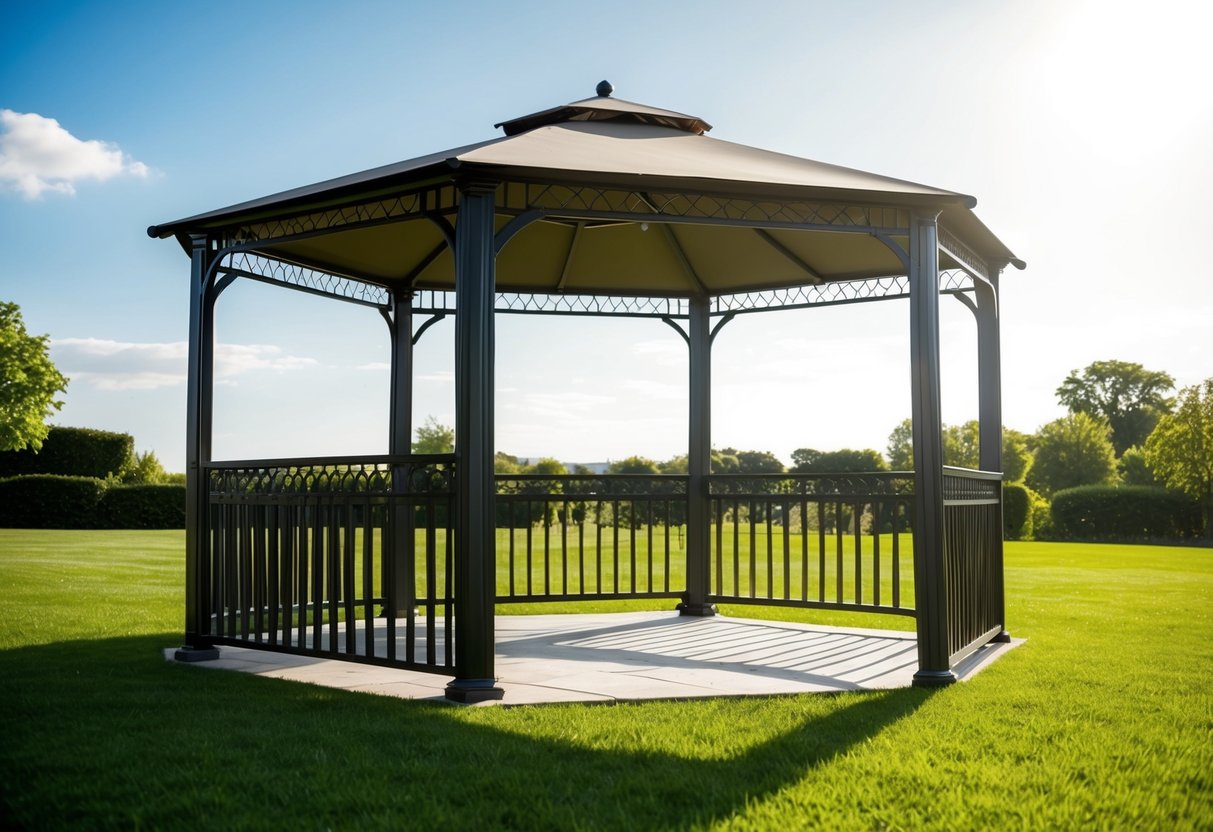
Setting up a gazebo on grass takes a bit of work. You need to make sure the ground is flat and can hold the weight. It’s also a good idea to think about how to keep your grass healthy under the gazebo. With some planning, you can have a beautiful outdoor space that’s perfect for summer parties or quiet evenings outside.
Key Takeaways
- Gazebos can be installed on grass with proper preparation
- A level and stable foundation is crucial for safe gazebo installation
- Regular maintenance helps keep both the gazebo and grass in good shape
Can A Gazebo Be Installed On Grass
Yes, you can put a gazebo on grass! It’s a great way to add a charming structure to your outdoor space.
Before you start, make sure the grass is thick and healthy. This will help support your new gazebo.
You’ll want to find a level spot for your gazebo. If the ground isn’t even, you might need to do some prep work first.
Here are some tips for installing your gazebo:
- Choose a sturdy gazebo that can handle outdoor conditions
- Use concrete footers to anchor the gazebo securely
- Make sure the ground can support the weight of the structure
Dig holes about 14 inches deep for the footers. Pour concrete into these holes to create a solid base.
Let the concrete dry completely before setting up your gazebo. This will keep it stable and safe.
Remember, a gazebo on grass can be a beautiful addition to your yard. It gives you a cozy spot to relax and enjoy nature.
With the right setup, your new gazebo will be a lovely outdoor retreat for years to come.
Preparing The Site
Getting your grass ready for a gazebo is an important first step. You’ll want to start by marking out the area where your gazebo will go. Use stakes and string to outline the space.
Next, clear away any rocks, sticks, or other debris from the marked area. This helps create a clean slate for your project.
Make sure the grass in your chosen spot is healthy and thick. Well-maintained grass provides a better base for your gazebo.
Now it’s time to level the ground. This is crucial for a stable foundation. You can use a long board and level to check for any slopes or dips.
Here are some options for creating a solid base:
- Concrete slab
- Concrete footings
- Wooden floor
A concrete foundation is often the most durable choice. But a wooden floor can work well too, especially for lighter gazebos.
Remember to check local building codes before you start. Some areas may have specific rules about gazebo foundations.
By taking these steps, you’ll set yourself up for success with your new gazebo. A well-prepared site leads to a more stable and long-lasting structure.
Choosing The Right Foundation
When putting a gazebo on grass, you need a good foundation. This keeps it stable and safe. You have a few options to pick from.
Ground anchors work well for grass and soil. They’re easy to install and hold the gazebo firmly in place. You can use these for both temporary and permanent setups.
Concrete footings are great for a lasting solution. They give your gazebo a solid, unmovable base. This is perfect if you want your gazebo to stay put for years to come.
Pavers offer another good choice. They create a flat, sturdy surface for your gazebo to sit on. Plus, they look nice and can blend in with your yard.
Before you decide, think about how long you want the gazebo to stay. Also consider your budget and the look you’re going for. Each option has its own pros and cons.
Remember to check that the ground is level before you start. This helps your gazebo stand straight and strong. With the right foundation, you’ll enjoy your outdoor space for a long time.
Installing The Gazebo
Getting your gazebo set up on grass is an exciting project! First, pick the perfect spot in your yard. Make sure it’s level and the ground is stable.
For a temporary or portable gazebo, you can simply place it on the grass. But remember to secure it with stakes or anchors to keep it from blowing away.
If you’re building a permanent gazebo, you’ll need a stronger foundation. Dig holes for concrete footings where the gazebo’s legs will go. Pour the concrete and let it dry completely.
Next, assemble your gazebo according to the manufacturer’s instructions. This usually involves putting up the frame and attaching the roof.
Once the structure is up, check that it’s level. Use a spirit level to make sure everything is straight. If needed, adjust the legs or add shims.
For extra stability, bolt your gazebo to the concrete footings. This will help it withstand wind and weather.
Finally, add any finishing touches like curtains or lighting. Now you’re ready to enjoy your new outdoor space!
Benefits Of Installing On Grass
Putting a gazebo on grass can be a great choice for your yard. It keeps things looking natural and pretty. Your gazebo will blend in with the rest of your lawn.
You’ll save money too. You don’t need to build a fancy foundation. Just set it up right on the grass.
Want to move your gazebo later? No problem! It’s much easier to reposition on grass than on a concrete pad.
Grass helps with drainage. When it rains, the water can soak into the ground instead of pooling around your gazebo.
You can still use garden pots in and around your gazebo. They add a nice touch of color and greenery.
If you’re worried about damaging your lawn, consider artificial grass. It looks real but needs less care. A gazebo on artificial grass can be a smart choice.
Remember, grass lets some sunlight through. This helps keep the area under your gazebo from getting too dark or damp.
Your gazebo on grass will create a cozy outdoor spot. It’s perfect for relaxing or having friends over. You’ll love how it looks and feels in your yard!
Maintenance Tips
Taking care of your gazebo on grass doesn’t have to be a chore. Regular check-ups can keep it in top shape for years to come.
Start by giving your gazebo a once-over every few months. Look for any loose screws or wobbly parts. Tighten things up if needed. This is extra important after windy days.
Don’t forget about the grass around your gazebo. Keep it trimmed nice and short. This helps air flow and stops moisture buildup. A well-kept lawn also makes your gazebo look even better.
Anchors are your gazebo’s best friends. Check them often, especially before storm season. If they feel loose, tighten them up right away. This keeps your gazebo steady when strong winds blow.
Here’s a quick checklist to help you out:
- Inspect for damage monthly
- Trim grass weekly
- Check anchors before stormy weather
- Clean the roof and floor as needed
- Look for signs of pests or rot
A weed barrier under your gazebo can be a big help. It stops grass from growing too close and makes upkeep easier. Just remember to check it now and then for tears.
With these simple steps, you’ll keep your grassy gazebo spot looking great all year round.
Frequently Asked Questions
Setting up a gazebo on grass can be tricky. Let’s look at some common questions about anchoring, flooring, and installation options.
How can I effectively anchor my gazebo on a grass surface?
You have a few good choices to anchor your gazebo on grass. Tent pegs or spiral stakes work well for soft ground. Push them deep into the soil at each corner.
For more security, use ratchet straps. Attach them to the gazebo frame and stake them into the ground. This helps in windy conditions.
Is it possible to place a gazebo on top of artificial turf, and if so, how?
Yes, you can put a gazebo on artificial turf. Use weights or sandbags to hold it down. Place them at each corner and along the sides.
Another option is to install ground anchors before laying the turf. Then attach your gazebo to these anchors.
What are suitable options for gazebo flooring when setting it up on grass?
Interlocking deck tiles make great gazebo floors on grass. They’re easy to install and allow water to drain.
Rubber mats are another good choice. They protect the grass and provide a stable surface. You can also use outdoor rugs or carpets for a cozy feel.
Are there specific steps to securely install a gazebo on grass without using traditional anchoring methods?
You can secure a gazebo without stakes or anchors. Use heavy planters or concrete blocks at each corner. Fill them with soil and plants for a nice look.
Another method is to build a wooden platform. Place it on the grass and set your gazebo on top. This gives a solid base without digging into the ground.
